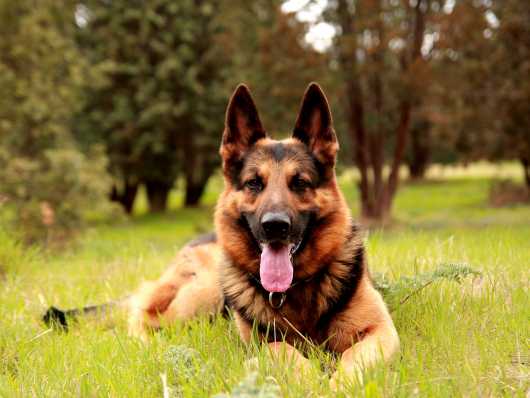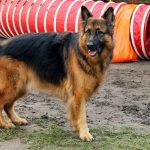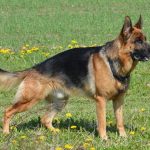Today many diseases are known and treated, which may or may not be generative, which is better to treat as soon as possible. One of these is degenerative myelopathy, which is seen in dogs preventing them from walking freely or doing other activities. It should be noted that this disease can also occur in cats, and it begins to shed symptoms between the ages of 3 and 14 years. Although these symptoms can also be seen in younger animals, they can be serious if not treated quickly.
Today many articles allow you to improve this condition in affected dogs or animals considerably. However, it is essential to know all the necessary information in this summary and the most recommended optimal treatment methods. Keep in mind that diet is a key factor in this care, so you must have even the necessary vitamins for its care. Considering these considerations, you will be able to deal with degenerative myelopathy in your dog in the best way, helping him improve.
What is German Shepherd Degenerative Myelopathy?
Contents
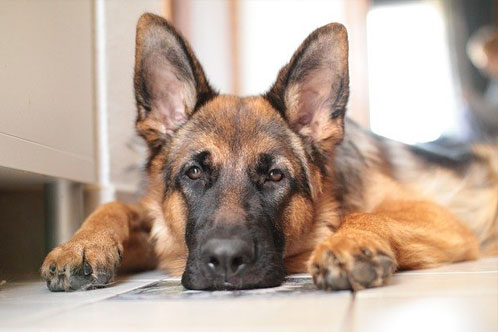
Degenerative myelopathy of the German shepherd is a progressive disease of the spinal cord in advanced age dogs. This pathology begins at eight years of age, and a great alert is the dog’s coordination to perform basic movements such as running or simply walking.
This disease is easy to identify since the dog tends to fall a lot on its hind legs, even dragging one or both legs when walking. Symptoms can begin with one hind limb affecting the other, reaching the thoracic limbs, progressively increasing the limbs’ weakness.
Although the dog will have difficulties keeping up, it is not a very painful disease and mostly affects the animal’s defecation a lot. Although there is still no treatment to reduce or stop this disease, there are measures that help these dogs maintain a lifestyle without problems.
It is also important that the animal perform rehabilitation exercises maintaining lifestyle habits at home that avoid developing pressure ulcers. In this way, you will also be indirectly avoiding problems with an infection in the urine or the progressive loss of mobility.
It should be noted that the rehabilitation sessions will undoubtedly help to delay this degenerative disease by helping to control secondary pain. Remember that this disease will cause atrophy, increasing muscle mass loss, so it is necessary to preserve the forelimbs’ function.
Causes of German Shepherd Degenerative Myelopathy
As its name indicates, this syndrome is caused by the spinal cord’s slow degeneration affecting nerve paths in the thoracolumbar portion. And although its causes are unknown, it is speculated that genetics has a lot to do with it. In the same way, some eating habits can increase or decrease this trauma.
It is important to note that these symptoms are found in cats or toy poodles on rare occasions, with the German shepherd being its main victim. Sometimes this deficiency is attributed to the lack of nutrients in the food given to the affected animal.
Vitamins E and B12 are very important to protect and maintain this breed’s health, so its correct supply is of the utmost importance. Keep in mind that the supply of vitamin B12 in dogs by injection is ineffective, so you must consider other measures for its correct implementation.
Signs and Symptoms Of German Shepherd Degenerative Myelopathy
One of the most common signs of this disease is dogs’ weakness in the hind legs at the moment of interest in moving. Thanks to this pathology, the dog will wander in an unstable way dragging its legs and supporting its legs negatively, increasing its falls progressively.
The position that the legs acquire is to be taken into account since their nails will tend to drag more than necessary on the ground. This is also a great sign that will help you to know if your dog has degenerative myelopathy by seeing if his back nails are worn in a slightly peculiar way.
When defecating, he also tends to be annoying and painful because he will not get a normal leaning on his hind legs. So you must take into account the minimum symptoms so that you can attack in the best way. This disease harms your dog’s healthy life.
It should be noted that incoordination is much more evident in paralysis, allowing the physician to move towards the diagnosis of degenerative myelopathy. Likewise, the absence of a painful response to palpation of the spine, so you must be attentive to all these signals in your dog.
Performing myelography of the thoracic and lumbar spinal cord can exclude compression pathologies, so fluid examination is highly recommended.
How to Treat German Shepherd Degenerative Myelopathy?
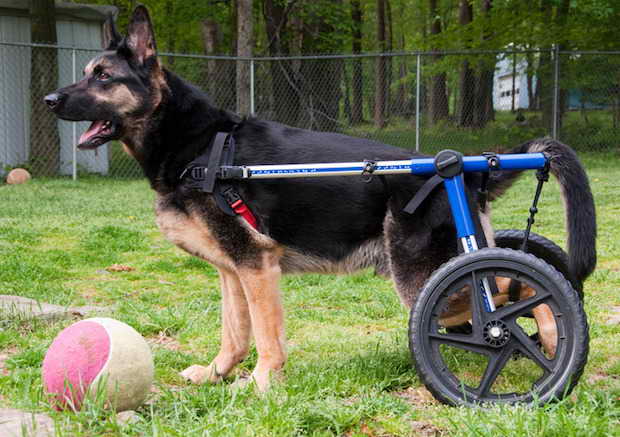
Unfortunately, no treatment could stop the degeneration, although there are measures that can be implemented to preserve your quality of life. In the same way, there are some drugs for its treatment, but none gives it the minerals necessary for its optimal and correct recovery.
-
Apply aminocaproic acid
Sometimes it can improve the administration of aminocaproic acid, which you can add to the food in small amounts for its supply. Rehabilitation and physical therapy are highly recommended in these situations to delay the degeneration greatly.
-
Use canine harnesses
There are currently canine harnesses that will help you maintain your puppies’ walks, so it is a great option for your dog. Keep in mind that there are models with support for the hind legs or the whole body with various adjustments to increase the dog’s comfort.
-
Your home should lead by example
Also, in your home, you must have the right place so that your dog can live without any inconvenience as comfortable as possible. A suitable and comfortable bed will greatly increase the animal’s mood, providing notable improvements.
-
Be careful with whom you apply the treatments
All these treatments must be applied by specialists such as veterinarians or students. The sooner you start your treatment, the better the results will be to reduce this pathology type.
-
Observe the movement of your dog
You must be attentive to your dog’s movements as they are the main symptoms of degenerative myelopathy in dogs. In the same way, maintaining an adequate and healthy diet is essential for them to lead lives without problems.
-
Exercise is important
Using good exercise routines coupled with vitamin and aminocaproic supplements will considerably improve your dog.
-
Vitamins are important
It should be noted that in full treatment, you must provide your dog with the necessary vitamins and continue with that for the rest of his life. Keep in mind that maintaining the quality of life includes exercises and a healthy diet for recovery.
